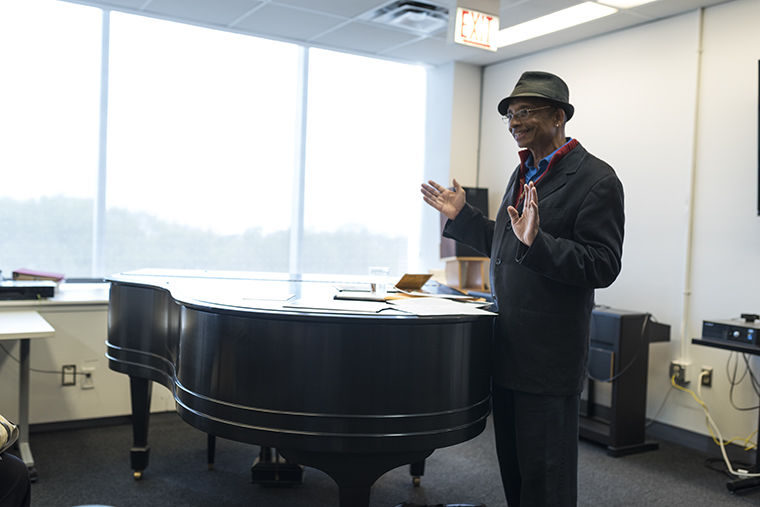Faculty member explores Cuban, American blues music
May 8, 2017

Stan West, journalist and adjunct faculty in the English department, spoke about the similarities of blues musicians from Chicago and Cuba during his May 1 presentation at the Center for Black Music Research, 618 S. Michigan Ave.
In an international music exchange program, Chicago blues musicians traveled to the El Oriente region of Cuba, often called “Cuba’s Mississippi,” to perform with and learn from local artists who practice their own style of the blues called changüí.
Stan West, an adjunct faculty member in the English Department and journalist, spoke about traveling with the group and playing in Cuban cities such as Santiago de Cuba, Holguín and Guantánamo on May 1 in the Center for Black Music Research, 618 S. Michigan Ave.
The trip was designed to create a cultural exchange in which both groups of musicians could learn from each other and explore the similarities of their culture and music, according to West.
“Musicians who just met each other could get up and start jamming with one another,” West said. “Many of them knew the same songs and the same beats, so it was a shared history—a shared musical history, a shared cultural history and a shared racial history.”
Audience member Fernando Jones, adjunct professor in the Music Department and Columbia Blues Ensemble director, said he wants to create his own blues camp in Cuba to build a relationship between American and Cuban blues musicians. He added that West’s presentation taught him about Cuban cities he was less familiar with such as Guantanamo.
Jones said he hopes his proposed music camp will bring young blues musicians from Chicago to work with 12–20 Cuban musicians. He added that he hopes by next year to bring two student musicians from Havana, Cuba, to Chicago so they can participate in his annual Fernando Jones’ Blues Camp International.
Jones said he acknowledges the similarities between Cuban and American blues and said that experiencing music from other cultures helps him grow as a musician.
“That two-way street of giving and receiving is probably the engine that keeps me rolling in this situation,” Jones said. “Just to see a kid who wants to play music and doesn’t have an opportunity to―and then you as an adult who may have resources that a kid doesn’t have―to be able to add to his or her engine is beautiful.”
In preparation for the trip, West said he went to CBMR to listen to tracks from its changüí collection and read about Cuban musicians and culture.
Janet Harper, a CBMR librarian who asked West to speak about his travels, said she thought the talk illustrated how the library’s resources could be used for practical purposes rather than purely academic research, like enhancing atraveling experience.
“There are so many levels of listening to music and appreciating it,” Harper said. “The center is for all of that, not just for assignments, not just to write an article for a magazine, a newspaper or an academic journal, not just to do your thesis work or dissertation.”
West said he prepared for the trip by learning Creole phrases at the Haitian American Museum of Chicago so he could communicate with people in the dialect, which is spoken in Cuba along with the official language, Spanish.
West said some of the better-known blues musicians he asked to participate in the music exchange were unable to attend the trip because of previous commitments but the trip laid groundwork for future collaborations between Cuban and American musicians.
“The more well-known and legendary blues artists were not able to go on this trip, but they will on future trips,” West said. “Many of the Cubans are now coming here and are here. So that’s helping create a conversation and a connection. What we did here was a step in the right direction.”







